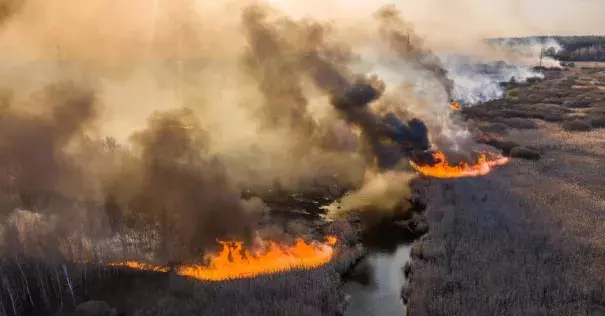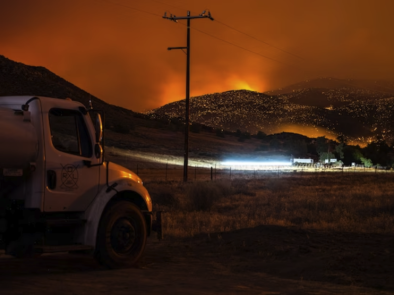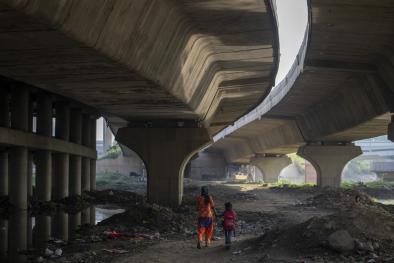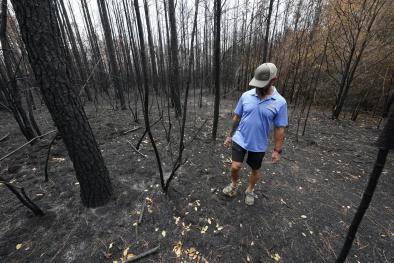Chernobyl Wildfires Reignite, Stirring Up Radiation

Climate Signals Summary: Climate change is increasing the size, frequency, and intensity of wildfires through warmer temperatures and drier conditions, like the Chernobyl zone saw this winter.
Article Excerpt: Firefighters have struggled to control wildfires burning through radioactive forest in the abandoned territory around the Chernobyl nuclear plant, where radiation levels are considerably lower than they were immediately after the 1986 accident but still pose risks.
Radiation readings near the wildfires, where smoke is swirling about, have been elevated, with the wind blowing toward rural areas of Russia and Belarus for most of the past week. The wind shifted Friday toward Kyiv, the Ukrainian capital, but authorities say the radiation level is still normal in the city, whose population is about three million.
...
Wildfires break out there often but the blazes burning through dry grass and pine forests this spring, after a warm and dry winter, are far larger than the typical brush fires in the Chernobyl zone.
The Exclusion Zone Management Agency, the government office that manages the site, said the fires have burned through more than 8,600 acres over the past week. By Saturday, about 400 firefighters, 100 fire engines and several helicopters had been deployed to the exclusion zone.
According to the state center of radiation and nuclear safety, contaminated smoke is expected to reach Kyiv this weekend. However, the radiation level in the air, once smoke has disbursed far from the fires, is considered safe. It is expected to be about a hundredth of the level deemed an emergency.
...
The main risk from the fires comes from inhaling, via the smoke, small radioactive particles thrown years ago from the open core of the Chernobyl reactor, said Olena Miskun, an air pollution expert with Ecodiya, an environmental advocacy group.
“Wind can raise hot particles in the air together with the ash and blow it toward populated areas,” Ms. Miskun says. Also, radioactive particles can land on gardens or fields and later be consumed in food.
“We are lucky to have quarantine measures in place now,” she said. “People stay at home, walk less and wear masks,” anyway, because of the coronavirus threat.
Related Content






